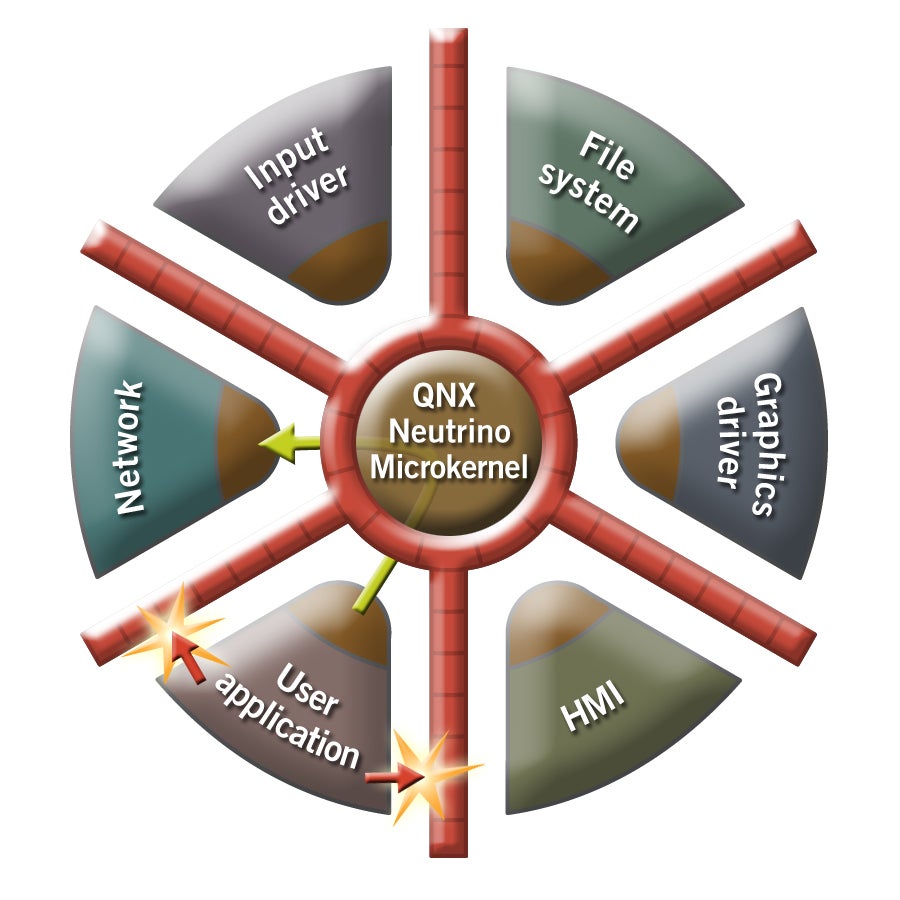A closer look at QNX Neutrino - the rock solid foundation of BlackBerry 10

The QNX Neutrino real time operating system (RTOS) is based on POSIX, like Linux. Its main advantage is how slim and optimized the kernel is, something the founders call a Micro Kernel architecture. The first edition was in 1982, and it has been polished and ironed out ever since. The source code is just 100 000 lines, compared to, say, Linux's 9 million, or Windows's 70 million lines of code. This means extreme reliability with very little chances to crash.
No wonder it is used in nuclear plants, defense networks and medical applications, or, as the QNX Systems founder Dan Dodge puts it, "QNX is used in systems where the cost of failure is very high". The core supports most modern processors, and multi-threading on 64-core systems and more. Alternatively, it can talk simultaneously to different chips over a network, and they won't know they are on different devices in different geographical locations, such as when using your BlackBerry GPS, and here the possibilities are endless.
Drivers and applications sit in their own isolated memory address, and operate independently. This way when something gives up the ghost, it doesn't drag the whole system down with it. Neutrino supports Adobe Air and Flash, Java, OpenGL, POSIX and WebKit, among others, so developers will have an easy time programming in any of the language of their choosing, instead of being locked down to one environment.
All programming languages are equal objects for the platform, and you can have both Adobe Air and JavaScript in one and the same app, working in tandem. It is also a real time operating system, which, in its car reincarnation, means it constantly monitors the car's speed, tire pressure or engine temperature, and an app can be built to take action when the values change. Have a look at the QNX technology concept car presentation with a Bentley Continental at CES 2013 for better understanding the possibilities with Neutrino.

Another advantage of QNX's Neutrino is that it can address larger memory pages than typical, which boosts performance, especially on ARM-based chipsets. This advanced memory management can improve their performance up to 30%, so with a 1GHz CPU, the user will feel as if using 1.3GHz chipset, just because this functionality is built into Neutrino.
Therefore it is clear that the BlackBerry 10 foundation is one of the most sound and optimized you can find because of QNX Neutrino, and RIM has built a great interface and core applications on top of it. Now the hard part is to keep the app store growing further from the mouthwatering 70,000 apps count at launch, and ultimately convince people to go back to BlackBerry devices, which new BB10 ambassadors like Alicia Keys should be making easier to do now.










Things that are NOT allowed: